Division for Climate and Environmental Health
Article
|Last update
The Division for Climate and Environmental Health is responsible for chemical preparedness in the health administration and is the largest Norwegian professional environment for health risk assessments. The division provides knowledge about the health consequences of environmental factors such as noise, pests and chemicals. The knowledge is sought after by the authorities, the health service and the population, and is used to provide advice in acute and ongoing incidents, and to prevent negative health effects.
Knowledge
The departments in the division conduct research and summarise knowledge in the field of public health, and assist municipalities, counties, county governors and other state institutions, health personnel and the general population to protect the public in connection with exposure to harmful environmental factors. The external research projects and risk assessment work for the authorities are closely linked.
The division has expertise in experimental toxicology, molecular biology, exposure research, environmental epidemiology, pest control, systematic knowledge summaries and access to health registries and biobanks. With sufficient infrastructure and expertise, the division has an excellent starting point for strengthening knowledge about causal relationships between various environmental factors and health outcomes to protect the population against health effects. In addition, the area has extensive national and international advisory and research cooperation, and participates in many projects funded by the EU's research programme.
Climate change is happening, affecting the environment and living conditions worldwide. How climate change will affect public health is unclear. We therefore need new knowledge both to adapt to the new climate norm and to limit health consequences. This is a very complex issue where the Division for Climate and Environmental Health has considerable expertise, in collaboration with other internal and external groups.
Preparedness
The division is responsible for advising health personnel, authorities and the general public about the health implications of chemical incidents. The Poison Information Centre has an on-call system staffed around the clock, which is a key part of the acute national health preparedness. The division also assists in less acute incidents where environmental components can cause health consequences over time. The division can analyse human samples to evaluate health effects and assess risk from exposure. A human environmental biobank to monitor population exposure over time has been established, giving valuable background levels for the population. In addition, the division assists in the field of vectors and infection in relation to outbreaks of vector-borne diseases.
In the event of an environmental incident, or suspected outbreak of disease related to hazardous environmental factors, the municipalities have a duty to notify NIPH pursuant to “Forskrift om miljørettet helsevern §5 og §6”.
Infrastructure
The division has advanced laboratory activities in chemical analysis, cell/molecular biology, immunology and genotoxicology, and has established several advanced cell models based on human stem cells, primary cells and cell lines. In addition, the division has laboratories where we develop new methods for pest control and to identify pests.

